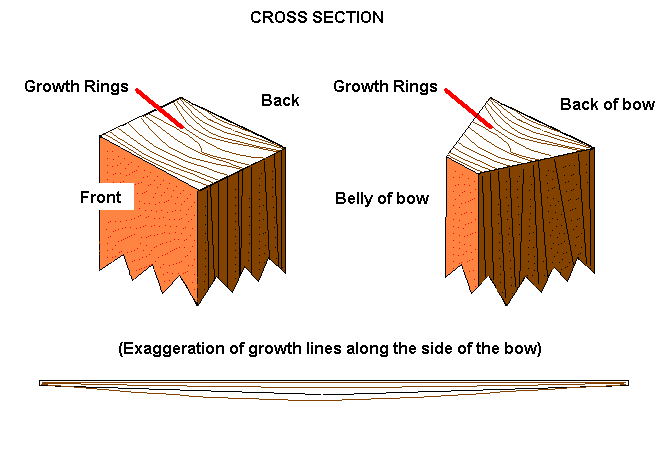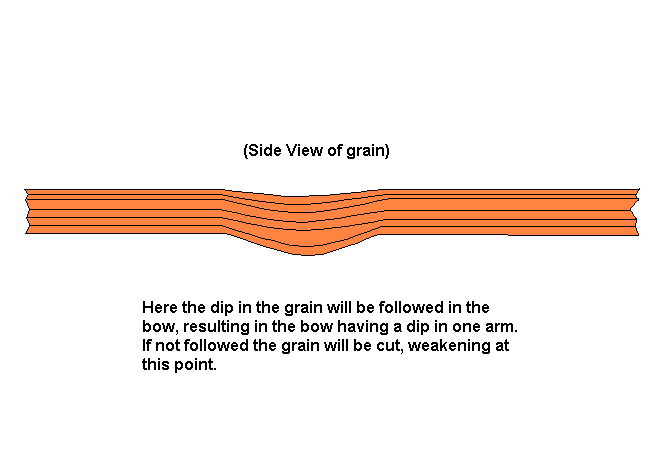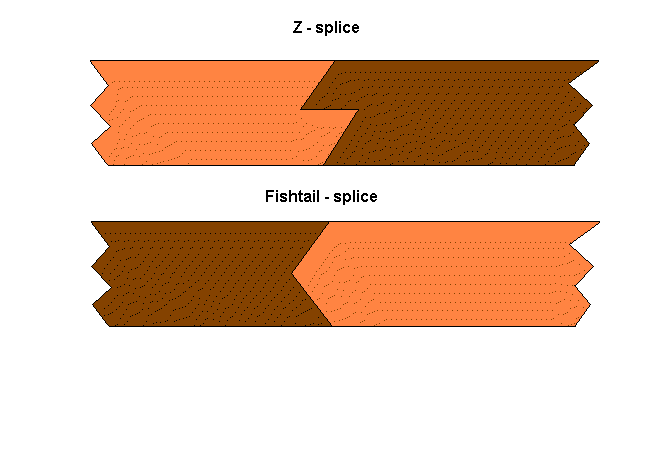
| |
 |
![]()
The greater the variation of grain and wood growth rings from the ideal, the more likely it will be that the completed bow will be weaker and more prone to breakage in use or in construction.

The grain should also run straight along the length of the stave from end to end. If it curves up and down, then you have to alter the design to follow the grain. At all times, the back of the bow should follow the line of the grain and the front (belly) of the bow should follow the line of the back (with the appropriate tapering required). Likewise if there are any knots in the wood, you have to alter the design to allow slightly extra wood to go around and support the weaker knot wood (or 'pins'). E.g. if the grain dips down in the bowstave, then the bow should also be shaped to follow that curve (from a side view of the grain).

With twisted staves, it is best to joint two "sister" split pieces from the same log (i.e. two pieces split next to each other from the same log - and which would then have similar twists) and joint them at the handle using a Z - or fishtail splice (as below). This ensures that both limbs are complementary, even if badly twisted.

This can also be done if you are unable to find a single length of wood to make a complete stave. 2 half-lengths can be spliced using either of the above splices, such that the spliced section will be in the handle section of the bow and therefore covered by the handle wrapping etc.
Offered by Brian.